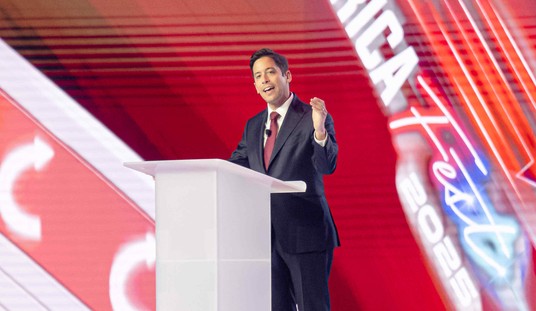With nearly a year’s worth of exclusive reporting on Obama’s green-energy crony-corruption scandal, you might think we’ve covered them all—but the hits just keep on coming. This week Fisker is in the news due to its failure to meet a Monday payment on their Department of Energy (DOE) loan, with $10 million due, and Wednesday’s House Committee on Oversight and Government Reform hearing: “Green Energy Oversight: Examining the Department of Energy’s Bad Bet on Fisker Automotive.”
Along with researcher Christine Lakatos, who writes The Green Corruption Files, I’ve addressed Fisker before. In last week’s column, I harkened back to an October 2012 report we did on 2009 stimulus-funded projects that were in trouble. We highlighted two companies on that list: Suntech and SoloPower. Suntech was recently put into bankruptcy and, about SoloPower, we said: “SoloPower’s power is waning.” On April 22, the Oregonian’s headline read: “SoloPower moves to power down Portland factory, gut remaining workforce.”
Fisker, the stimulus-funded company making $100,000+ electric cars in Finland, was also on that October 2012 list. At the time, I wrote: “Though the company has balked at Solyndra comparisons, Fisker may well be on ‘death’s door.’”
Despite defaulting “on loans or investment conditions at least four separate times” and squandering more than $1.3 billion in investment capital and government loan money, the company’s founder and former CEO, Henrik Fisker (Fisker left the company in March over “disagreements with management”), in testimony before the House Oversight Committee hearing on Wednesday, argued that the company was still viable. In both the opening and closing of his testimony, Fisker used the following statement regarding the company that bears his name: “Fisker still has the potential to build on these achievements if the company can secure financial and strategic resources.”
Recommended
While Fisker’s testimony indicates that he is proud of the company’s “many notable achievements,” Subcommittee Chairman Jim Jordan (R-OH), declared in his opening statements: “Fisker should have never received taxpayer money; it was rated CCC+...it was a junk grade investment.” So why did Fisker get the loan in the first place and continue to receive funding even after it “missed a crucial production target?”
?While Wednesday’s hearing didn’t reveal any smoking gun, and Fisker claimed: “I am not aware and do not believe that any improper political influence was used in connection with the company's loan application or subsequent negotiations with the Department of Energy,” experience in reporting on the various stimulus-funded loan guarantee programs, grants and tax credits indicates otherwise.
True, unlike many of the other stories, no one from the Fisker organization itself served on Obama’s (now-disbanded) Jobs Council, nor is there an obvious connection such as a former DOE staffer sitting on the board. But, surprise, there are political connections nonetheless.
In the case of Fisker, the cronyism comes first in the form of the venture capital firm with private investments that needed government funds to make their 2008 investment good. The company in question? Kliener Perkins Caufield & Byers (KPCB)—which, according to New York magazine, “has both former Vice President Al Gore and John Doerr, a very big-ticket Obama donor, on its board of directors.” Doerr has had roles inside the Obama White House since early 2009, from jobs, to economics, to crafting the energy sector of the 2009-Recovery Act, from which his firm—KPCB—has been rewarded handsomely. The Wall Street Journal (WSJ), in 2008, reported that the Fisker deal was “one of the first deals in which former Vice President Al Gore provided advice for Kleiner.” KPCB’s Managing Partner, Ray Lane, told the WSJ that their investment was more than $10 million and was “one of our bigger investments.”
In an earlier report, I said: “Doerr jumped on the Climate Change bandwagon in 2005 and credits Al Gore for his ‘environmental awakening’—though his conversion may have been more financial than spiritual, as he saw green-energy as the ‘mother of all markets’ and ‘the largest economic opportunity of the 21st century.’”
Despite a green-energy push from the White House, these funds haven’t “delivered the returns expected on the timeline expected for most venture capitalists.” In fact, Doerr admitted in a November 2009 speech that the government funding saved them: “If we’d been able to foresee the crash of the market, we wouldn’t probably have launched a green initiative, because these ventures really need capital. The only way in which we were lucky, I think, is that the government stepped in, particularly the Department of Energy. Led by this great administration that put in place these loan guarantees.”
Clearly the Fisker “investment” wasn’t going as well as KCBP expected. In Wednesday’s hearing, a 2009 email from Bernhard Koehler, Fisker cofounder and COO was addressed. In it, he pressured someone inside the DOE, regarding the need for the taxpayer-funded loan, because they couldn’t meet payroll.
The Fisker loan had three specific strikes against it: it had a dismal credit rating—a “junk bond” CCC+; it was initially rejected by the credit review board; and the loan was twice the value of the collateral. While the Advanced Technology Vehicle Manufacturing (ATVM) program received 150 applications, only 5 were awarded loans—and all had some political connections or ramifications: Fisker—$529 million; Ford—$5.907 billion, Nissan—$1.448 billion; Tesla—$465 million; and The Vehicle Production Group, LLC—$50 million.
Companies without connections didn’t get approved. In November, I reported on XP Technologies, one of those companies whose loan application was rejected. Alleging that “criminal activities did take place by DOE staff and affiliates,” XP Technologies has filed a lawsuit concerning the DOE’s denial. Following the publication of my column on XP Technologies, another applicant, who also didn’t have any political connections, contacted me. This applicant acknowledged that he really didn’t know the system and, therefore, looking back, wasn’t surprised that his application was denied. However, he told me that he received no help or encouragement from the DOE; they did nothing to make it easier for him. It was like they weren’t really interested in anyone but the favored few. Accepting applications was, perhaps, just for cover.
Fisker’s $529 million loan was approved in September 2009, and the first tranche was funded May 2010. But it took a lot of finagling to get there.
Vice President Biden stepped in to move the loan along—we don’t know why, but we know he did. (We also know more about other green-energy projects in which Biden was involved.) In August 2009, Fisker visited in Delaware a GM factory, which was scheduled to be shut down. According to a 2009 WSJ report, once politicians in the state got wind of Fisker’s possible interest, they ratcheted up the pressure. Saving the plant, according to officials involved in the decision, “gave fresh urgency to the DOE’s quest for Fisker.” However, by August, the December 2008 application still wasn’t approved. “Delaware's governor and congressional delegation began peppering U.S. Energy Secretary Steven Chu with calls on Fisker's behalf. They also had repeated discussions with Vice President Biden and his staff.” Five days after Governor Merkell had a September meeting with Secretary of Energy, Steven Chu, “Chu announced the government had signed a provisional agreement” for Fisker’s loan. Part of the deal included, not just the $529 million DOE loan, but also $21 million in grants and loans from the State of Delaware.
On October 27, 2009, Biden toured Fisker’s Delaware plant to tout the DOE's Loan Program. ABC News reported: “Standing in a shuttered General Motors plant in Wilmington, DE, Vice President Biden proclaimed that a half-billion-dollar Department of Energy loan would transform the idled site into a production line for electric cars.”??“Biden heralded the Energy Department's $529 million loan to the start-up electric car company, called Fisker, as a bright, new path to thousands of American manufacturing jobs,” and stated: “This is seed money that will return back to the American consumer in billions and billions and billions of dollars in good, new jobs.”
Referencing Delaware’s involvement, the state’s chief of economic development, Alan Levin said: “We had in the vice president a secret weapon.”
In addition to Doerr and Gore championing the Fisker Project, and the Biden “secret weapon,” Fisker had a few other friends in high places. The National Legal and Policy Center reports that Fisker was receiving advice regarding their loan application from Debevoise & Plimpton LLC, a law firm with a history of donating to President Obama and other Democrats—which taxpayers also funded. Too bad XP technologies, and other applicants without connections, didn’t know to hire Debevoise & Plimpton.
Now, we all know that Fisker never made one car in Delaware—or anywhere in the US. The Delaware plant is “absolutely empty.” We know that Fisker lost $557,000 on each flashy sports car it sold and has laid off most of its employees. And we know that Fisker will likely be the next taxpayer-funded green-energy project to go bankrupt.
While we do not know all the political connections that got Fisker a free ride to make flashy cars in Finland, we do know there is crony-corruption. As the WSJ reports: “The Obama Energy Department is keeping tight rein on documents, so we don't know.” We just don’t know.

























Join the conversation as a VIP Member